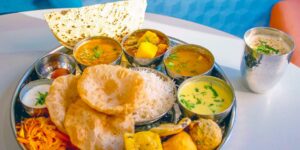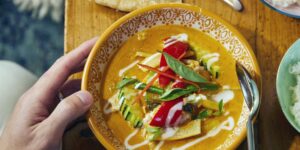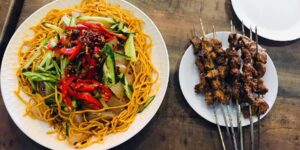Curry Diploma
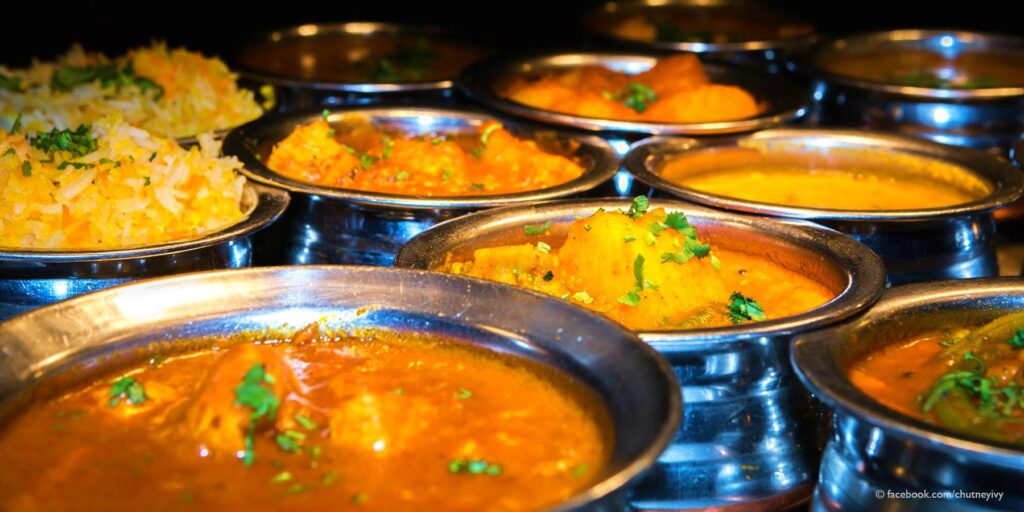
Earn Your Leicester Curry Diploma.
Do you know your dahi puri from your dum biryani? Can you discern a dosa from a dhansak? Whether you’re a curry expert or a hungry beginner, we invite you to test your knowledge with the ‘Leicester Curry Diploma’! Complete all 12 questions and we guarantee you will learn something new and be inspired to further explore Leicester’s distinctive and delicious Indian curry scene. And if you answer all questions correctly, you’ll be awarded a Leicester Curry Diploma – a testament to your expertise in the world of curries. Good luck!
Scroll to the bottom to check your answers!
1) What is a dosa?
a) An extremely spicy curry.
b) A type of naan bread.
c) A thin pancake, typically made from rice flour.
2) Which of these starters would you most likely find in a South Indian restaurant?
a) Momo
b) Shingara
c) Vada
3) Name the popular curry originating within the Parsee community that features lentils and aromatic spices?
a) Dhansak
b) Dopiaza
c) Madras
4) Which is a type of bread enjoyed with a curry?
a) Bhatura
b) Bonda
c) Barfi
5) Which of these is a popular Indo-Chinese dish?
a) Vegetable Mangalore
b) Vegetable Manchurian
c) Vegetable Manchester
6) What will you most likely find on top of the street food snack dahi puri?
a) Garlic and fresh ginger
b) Yoghurt and tamarind
c) Chickpea curry
7) The Mughlai dish Lamb Nihari is usually made with which cut of meat?
a) Shoulder
b) Neck fillet
c) Shank
8) If your curry is named ‘achari’, you would expect it to include a fair amount of…
a) Cream
b) Spinach
c) Pickle
9) How should your biriyani have been prepared if it is described as “dum”?
a) Quickly fried in a wok.
b) With lots of extra chillies.
c) Steamed in a sealed pot.
10) You want a vegan or vegetarian curry with aubergine – which word do you look for?
a) Baingan
b) Bhindi
c) Gobi
11) Everyone knows Chicken Tikka Masala – but what does ‘masala’ mean?
a) Cooked with a creamy sauce.
b) Made mild for people new to spicy food.
c) A spice or spice blend.
12) What is “mogo”?
a) A salty drink made from yoghurt.
b) A root vegetable.
c) Pungent dried fish used for flavour.
Check your answers!
Question 1
Answer: c) A Thin Pancake
This is typically made from ground rice and lentil flour, which is then fermented. In India, they are often a breakfast dish. You can enjoy dosas at most South Indian venues and many of Leicester’s vegetarian restaurants.
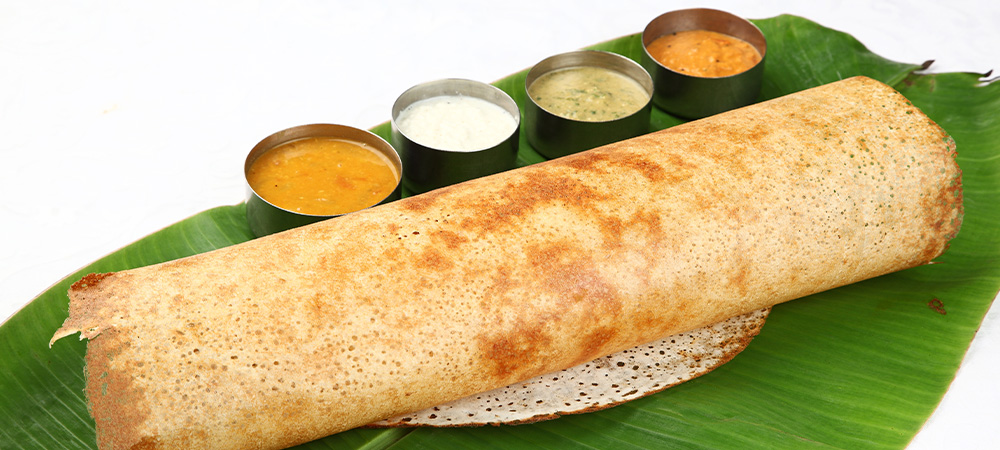
Question 2
Answer: c) Vada.
These are savoury fried snacks, sometimes described as fritters or doughnuts. Typically made with lentils and served with spicy sambhar and coconut chutney. Try them at Chettinad on London Road in Leicester or other South Indian restaurants.
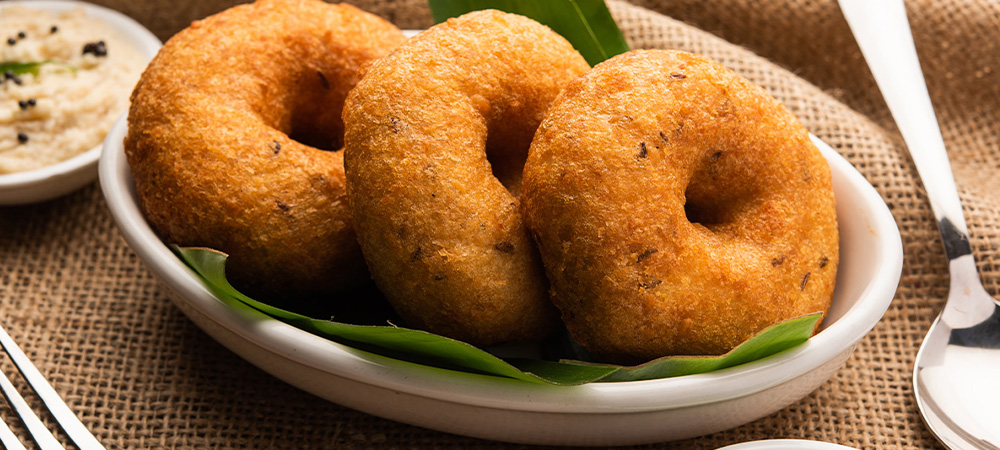
Question 3
Answer: a) Dhansak
In the UK, you may sometimes find pineapple added for a fruity sweetness, though in India it is more likely to be pumpkin. The version served at Spice Bazzar on Welford Road is delightful.
NB. The Parsee community are an ethnoreligious group of the Indian subcontinent adhering to Zoroastrianism. They descended from Persians who migrated to Medieval India.
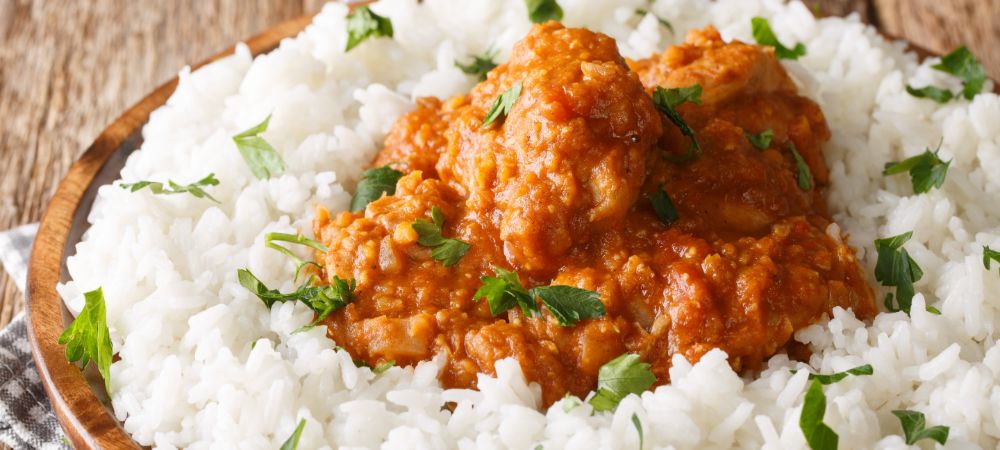
Question 4
Answer: a) Bhatura
A deep-fried bread that puffs up nicely. The ones served at Kayal and Herb (both on Granby Street) are spectacular.
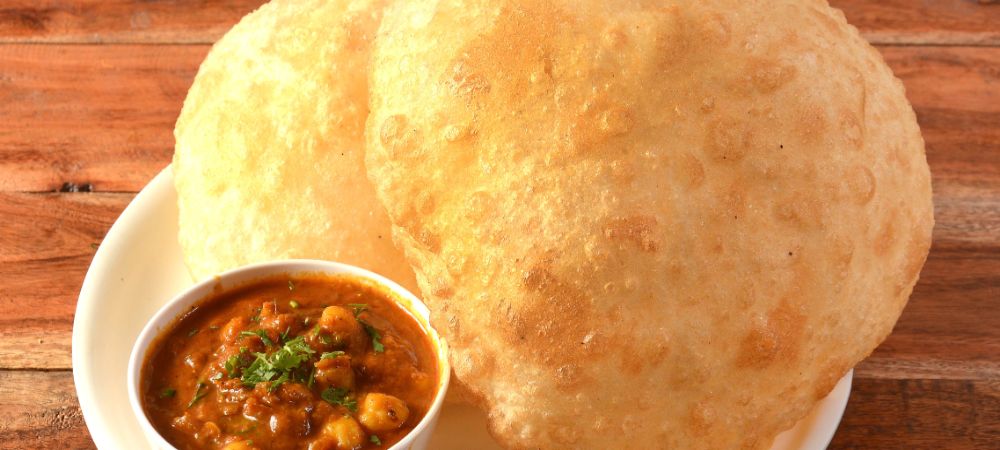
Question 5
Answer: b) Vegetable Manchurian
A fusion dish with a sweet and sticky sauce. You could compare the versions served at Bobby’s on Belgrave Road and Spice of India on Melton Road.
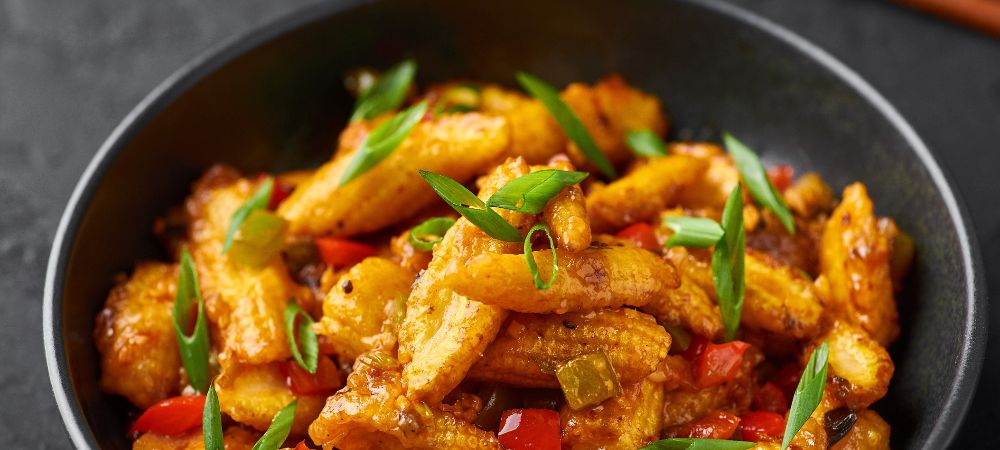
Question 5
Answer: b) Yoghurt and Yamarind
You don’t need to go to Mumbai for this snack of crisp pastry shells filled with the likes of diced potato, sev (small pieces of crispy noodle) and chutney. Great versions of this and similar chaat dishes are available in many of Leicester’s street food venues.

Question 7
Answer: c) Shank
This rich, slow-cooked stew is a strong contender for the national dish of Pakistan. It is one of the North-West specialities on offer at Tipu Sultan in Oadby.
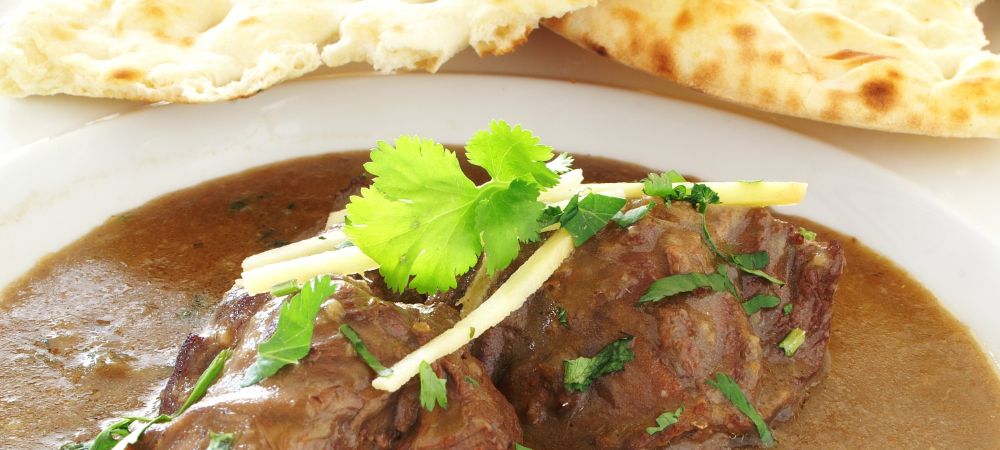
Question 8
Answer: c) Pickle
Achar means pickle, and pickled limes or fruits such as Bangladeshi shatkora are often used to bring distinctive sharpness to sauces. Achari Gosht (with lamb) is served at Dine India in Countesthorpe.

Question 9
Answer: c) Steamed in a Sealed Pot
This classic method involves layering meat, rice and vegetables inside a cooking pot, sealing it tightly with a pastry rim and slowly steaming. Pamson Grill on Highfield Street serves it in this style.

Question 10
Answer: a) Baingan
Baingan is the Hindi word for aubergine. Try Indigo on Melton Road for the classic Baingan Bharta – smokey, fire-grilled aubergine mashed with tomato, onions, herbs and spices.
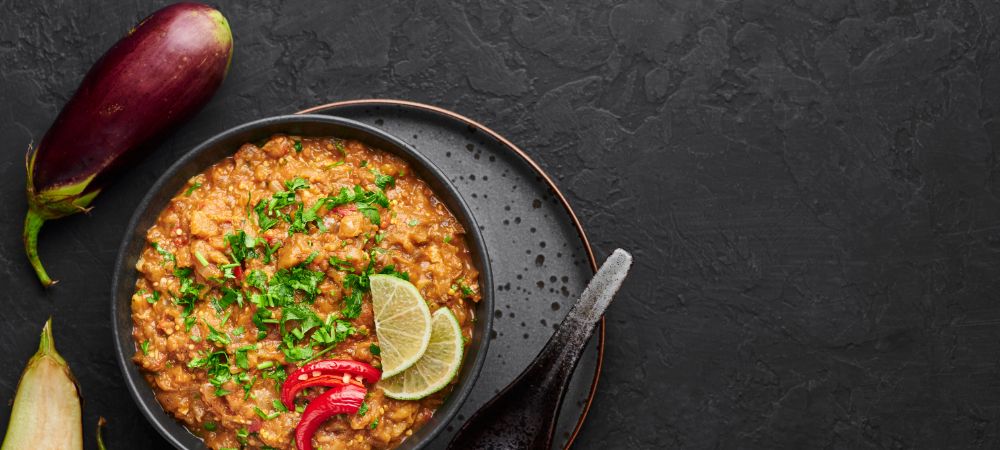
Question 11
Answer: c) A Spice or Spice Blend
Hence you might find it used to describe popular spice blends such as garam masala, in spiced dishes and drinks such as masala chai or in tea with spices such as cloves, cinnamon, nutmeg and cardamom. Try a range of chais at Chaiiwala on Belgrave Road. It may no longer be so fashionable, but Chicken Tikka Masala is still widely available, or try broadly similar dishes such as Butter Chicken or Chicken Makhni.
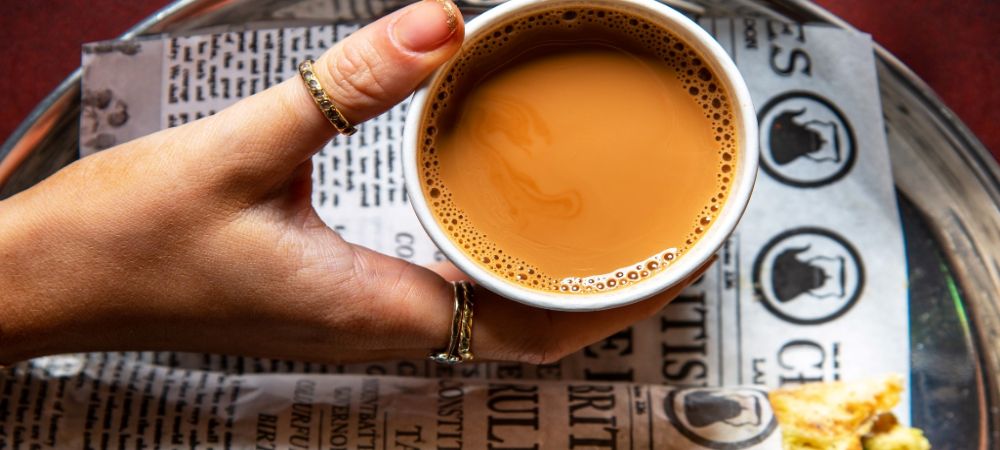
Question 12
Answer: b) A Root Vegetable
Also known as cassava, manioc or tapioca root, you will often come across mogo in Leicester street-food restaurants made into spiced chips. It can also be used in vegetarian main courses – Paddy’s Marten Inn on Martin Street, for example, offers the likes of sizzling paneer and mogo shashlick or jeera mogo (spiced with cumin).

Think you’ve earned your Leiceser Curry Diploma?
If you feel that you've learnt everything you need about Leicester curries, and you can ace this test – then congratulations! You can download your Leicester Curry Diploma below.
